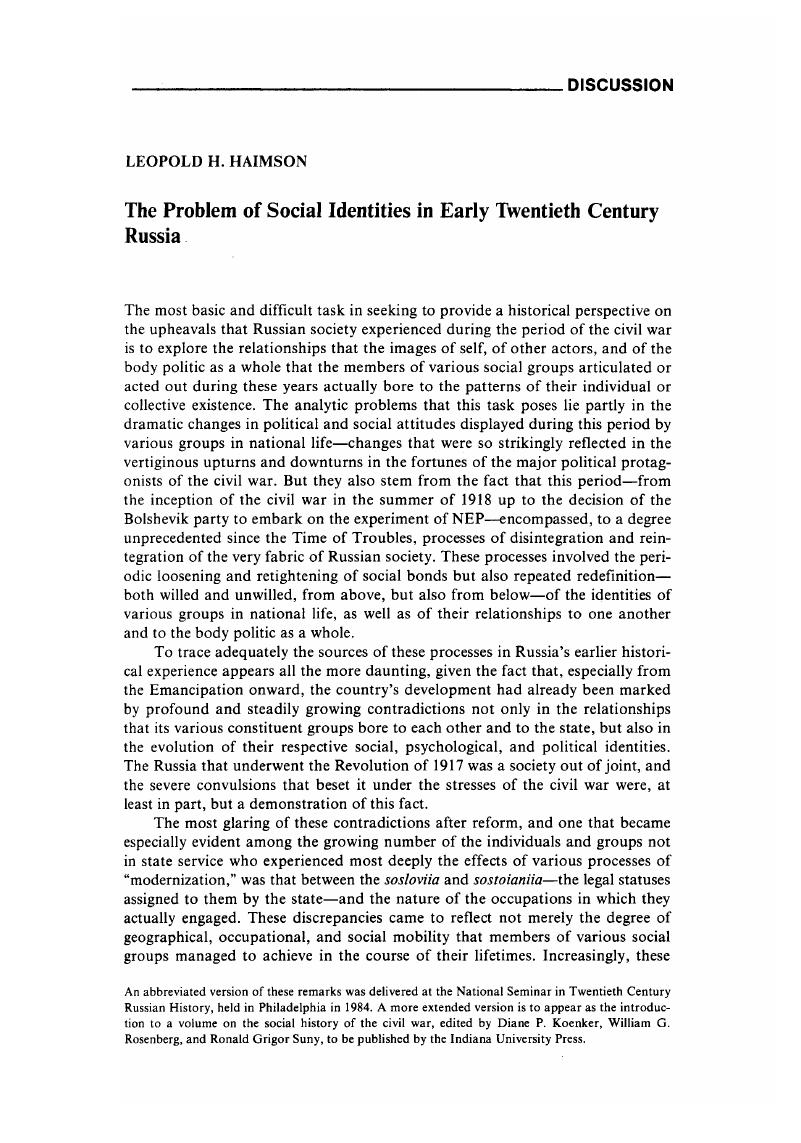Article contents
The Problem of Social Identities in Early Twentieth Century Russia
Published online by Cambridge University Press: 27 January 2017
Abstract

- Type
- Discussion
- Information
- Copyright
- Copyright © Association for Slavic, East European, and Eurasian Studies. 1988
References
1. For an exhaustive recent treatment of the subject, with somewhat different emphases, see Gregory L. Freeze, “The Soslovie (Estate) Paradigm and Russian Social History,” American Historical Review 9l (February 1986): ll-36.
2. See Sanders, Jonathan, “Drugs and Revolution: Moscow Pharmacists in the First RussianRevolution,” Russian Review 44 (1985): 351–377 CrossRefGoogle Scholar, and Engelstein, Laura, Moscow, 1905: Working-class Organization and Politcal Conflict (Stanford Calif.: Stanford. University. Press, 1982, p. 120–121 Google Scholar.
3. y Garcia, Ziva Galili, The Menshevik Leaders of the Petrograd Soviet: Social Realities and Political Strategies, February-October 1917 (Princeton, N.J.: Princeton University Press, in press).Google Scholar
4. F. D. [Fedor Dan], “Nekotorye itogi,” Rabochaia Gazeta, no. 214 (16 November 1917).
5. This article, “Vybory v Uchreditel'noe Sobranie i diktatura proletariata,” was published inDecember 1919 in the journal Kommunisticheskii internalsional, nos. 7–8. It is reprinted in Lenin's Polnoe Sobranie Sochinenii, 5th Edition (Moscow 1963) 40: 1–24.
6. Wildman, Allan K., The End of the Russian Imperial Army: The Old Army and the Soldiers'Revolt (March-April 1917) (Princeton, N.J.: Princeton University Press, 1980).CrossRefGoogle Scholar
7. Uchreditel'noe sobranie. Stenograficheskii otchet (Petrograd, 1918), pp. 56–57 [all emphasesmine].
8. See Pershin, , Agrarnaia revoliutsiia v Rossii (Moscow, 1966) 2: 255–257, and 261–263Google Scholar, and Keep, , The Russian Revolution, (New York, 1976), p. 406 Google Scholar.
9. The Executive Committee of the All-Russian Union of Railwaymen.
- 18
- Cited by


